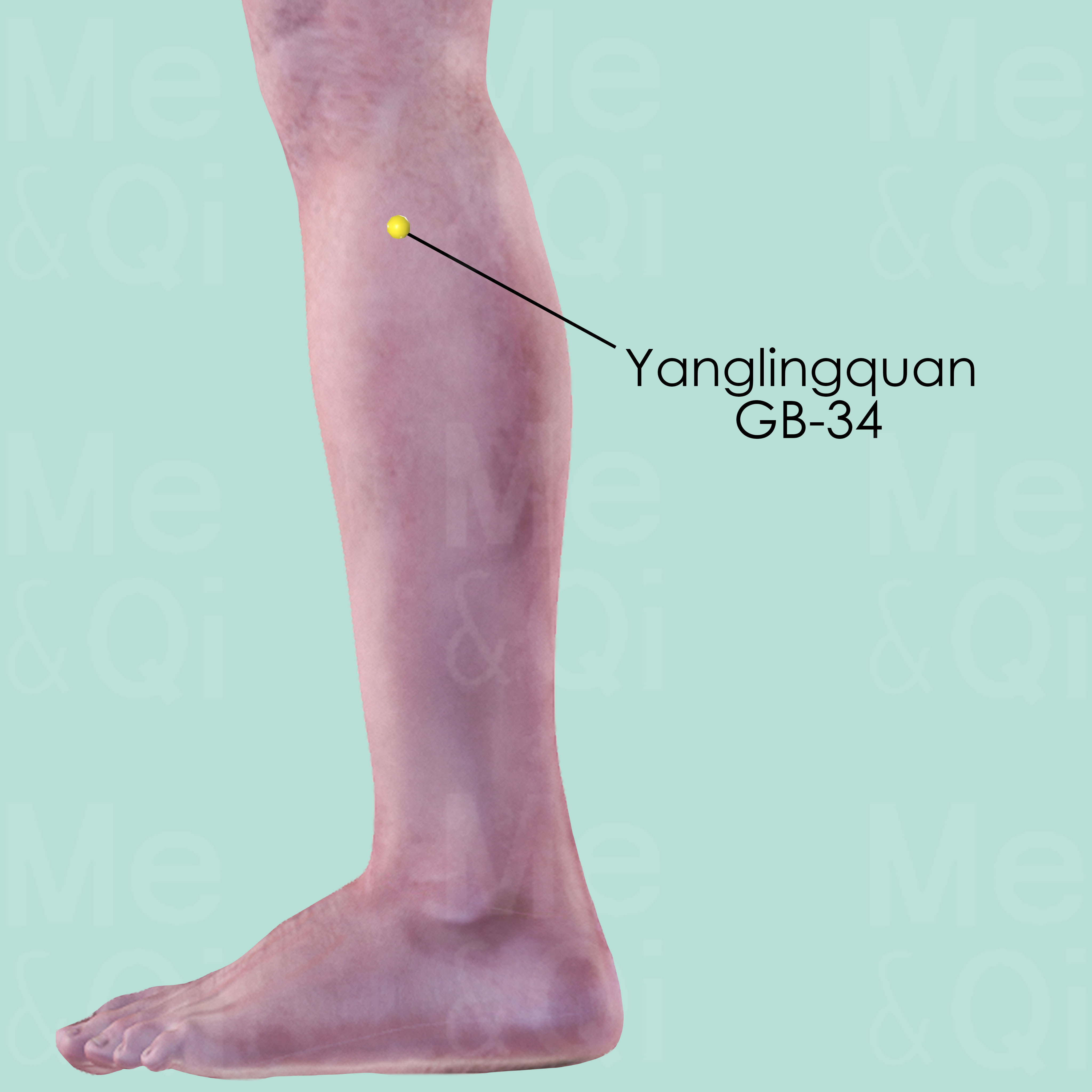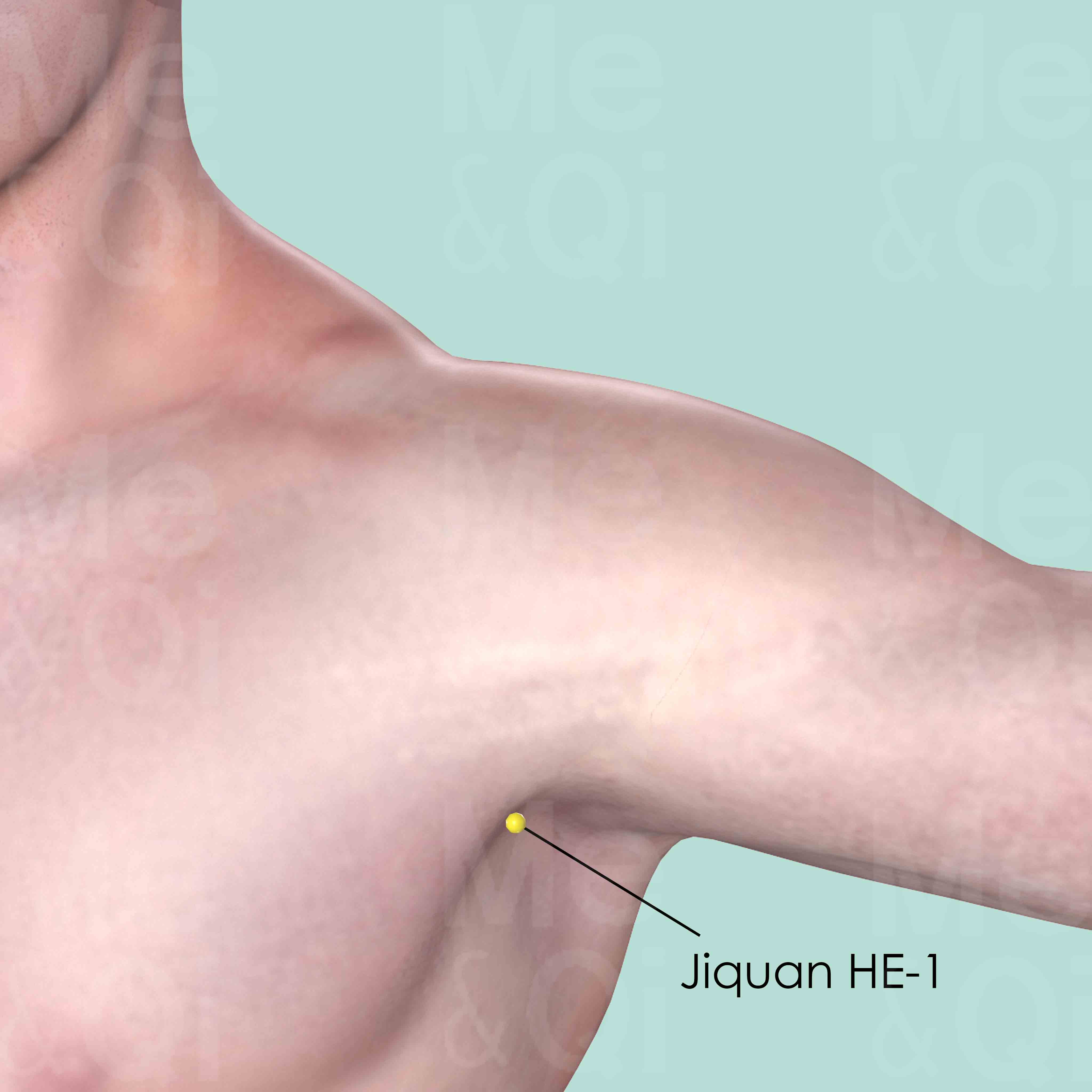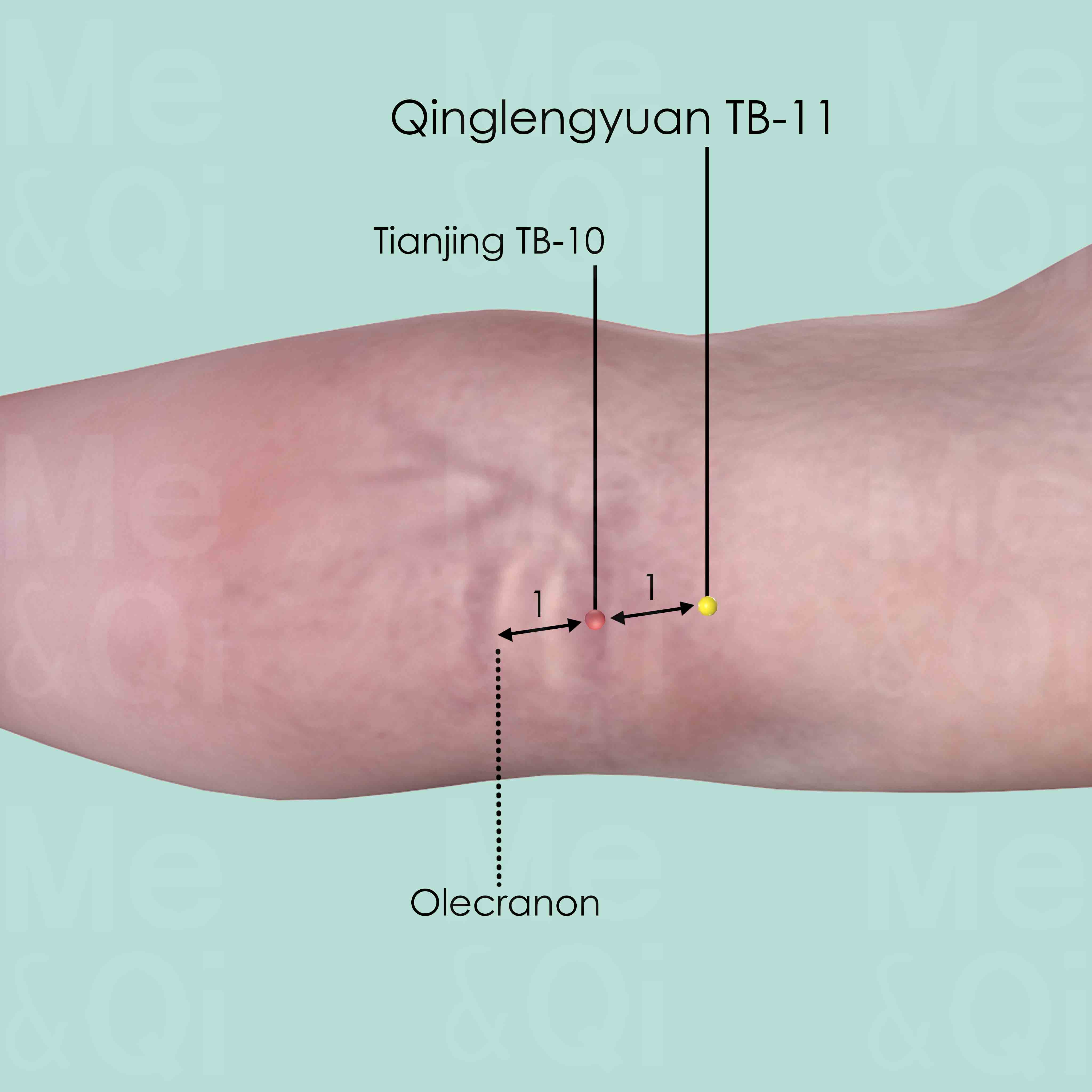Shoulder Stiffnessaccording to TCM
Symptom families: Joint Symptoms, Shoulder Issues
Parent symptom: Joint Stiffness
What is Shoulder Stiffness?
Shoulder stiffness encompasses a loss of the shoulder joint's normal range of motion, often accompanied by discomfort and the inability to perform movements such as reaching overhead or behind the back. This symptom may arise from various conditions, from postural issues to rotator cuff injuries, and can significantly disrupt daily activities and quality of life. While common in individuals who have sustained shoulder injuries, it can also occur without a clear cause, leading many to seek both medical and alternative treatments.
How does TCM view Shoulder Stiffness?
Traditional Chinese Medicine (TCM) approaches shoulder stiffness as an obstruction within the body’s meridian system, specifically the pathways that regulate Qi, or vital energy, and blood flow to the shoulder. TCM emphasizes that such physical symptoms are often signs of deeper imbalances, potentially stemming from external pathogenic factors or internal organ disharmonies.
Treatment focuses on identifying the unique pattern of disharmony for each individual, thereby enabling a tailored approach that seeks to restore the body’s natural flow of energy and alleviate symptoms.
Root Causes of Shoulder Stiffness in TCM
TCM recognizes several patterns that may lead to shoulder stiffness, often involving the Stagnation of Qi and Blood or an invasion of Wind and Dampness into the shoulder. For instance, Blood Stasis can cause sharp, fixed pain and lead to stiffness, while Liver Yang Rising might manifest as tension and rigidity in the shoulder.
Understanding these patterns is fundamental in TCM, as they direct the practitioner towards specific therapeutic strategies designed to address the root cause of the stiffness, not just its physical manifestation.
Explore below more details about what might cause Shoulder stiffness according to TCM.
- By Syndrome
- By Organ
- Blood Stasis
- Yang Excess
- Liver
Blood Stasis
Blood Stasis in TCM is a concept where the blood flow in the body is not as smooth or efficient as it should be. Imagine a river that's supposed to flow freely, but instead, it's getting blocked or moving too slowly in some parts. This can lead to various health issues, like pain that feels sharp or stabbing, dark bruises, and a complexion that looks purplish. TCM believes that good health relies on the smooth and vibrant flow of Qi and blood throughout the body, so when blood gets stuck, it's like a traffic jam in your body, leading to discomfort or health problems.... see more
Blood Stasis Patterns That Can Lead to Shoulder Stiffness
| Pattern Name | Relevant Symptoms | Relevant Formulas |
|---|---|---|
| Blood Stagnation | Shoulder stiffness, Dark face, Purple lips, Stabbing fixed pain, Abdominal masses, Purple nails, Menstrual cramps, Dark menstrual clots, Dark menstrual blood, Lumps... see more | Tao He Cheng Qi Tang | Da Huang Mu Dan Pi Tang | Gui Zhi Fu Ling Wan | Di Dang Tang | Dan Shen Yin | Da Huang Zhe Chong Wan | San Zhong Kui Jian Tang | Hai Tong Pi Tang | Huang Qi Gui Zhi Wu Wu Tang |
Yang Excess
Yang Excess in TCM refers to a state where there is an overabundance of Yang energy, leading to symptoms of heat and hyperactivity in the body. This pattern of disharmony often arises from factors like stress, excessive physical activity, overconsumption of spicy or heating foods, or an internal imbalance that causes Yang to flare up. Symptoms of Yang Excess include a feeling of heat, red face, irritability, restlessness, thirst, constipation, and a rapid, forceful pulse. Treatment in TCM for Yang Excess aims to cool down and subdue the excessive Yang while nurturing Yin energy to restore balance.... see more
Yang Excess Patterns That Can Lead to Shoulder Stiffness
| Pattern Name | Relevant Symptoms | Relevant Formulas |
|---|---|---|
| Liver Yang Rising | Stiff shoulder, Headaches, Dizziness, Tinnitus, Deafness, Blurry vision, Dry mouth, Dry throat, Insomnia, Irritability, Exhaustion, Anger, Stiff neck, Shoulder stiffness, Stiff upper back... see more | Liu Wei Di Huang Wan | Qi Ju Di Huang Wan | Tian Ma Gou Teng Yin | Ling Jiao Gou Teng Tang | Da Chai Hu Tang | Zhen Zhu Mu Wan | Zhen Xin An Shen Tang |
Liver
In TCM the Liver is viewed as the organ responsible for the smooth flow of Qi, Blood, and emotions throughout the body. It plays a key role in regulating mood, storing blood, supporting digestion, and ensuring the health of tendons and eyes. When the Liver malfunctions or is imbalanced in TCM, it can lead to a range of issues such as irritability, mood swings, menstrual irregularities, eye problems, and muscular stiffness or pain. A malfunctioning Liver in TCM reflects not only physical disturbances but also emotional and mental disharmony, emphasizing the holistic approach of TCM in addressing health and wellness.... see more
Liver Patterns That Can Lead to Shoulder Stiffness
| Pattern Name | Relevant Symptoms | Relevant Formulas |
|---|---|---|
| Liver Yang Rising | Stiff shoulder, Headaches, Dizziness, Tinnitus, Deafness, Blurry vision, Dry mouth, Dry throat, Insomnia, Irritability, Exhaustion, Anger, Stiff neck, Shoulder stiffness, Stiff upper back... see more | Liu Wei Di Huang Wan | Qi Ju Di Huang Wan | Tian Ma Gou Teng Yin | Ling Jiao Gou Teng Tang | Da Chai Hu Tang | Zhen Zhu Mu Wan | Zhen Xin An Shen Tang |
TCM Herbal Formulas for Shoulder Stiffness
The TCM pharmacopeia offers an array of formulas and herbs tailored to alleviate shoulder stiffness. For a pattern like Blood Stasis, Tao He Cheng Qi Tang, which includes Peach Kernels, is used to invigorate Blood and dispel Stagnation.
In cases of Liver Yang Rising, which can contribute to tension and stiffness, formulas like Liu Wei Di Huang Wan, rich in Prepared rehmannia, help nourish Yin and subdue Excess Yang. These treatments exemplify TCM’s holistic approach to healing, aiming to restore equilibrium within the body's complex system.
Explore below some TCM herbal formulas used to address shoulder stiffness, organized by cause and by formula type.
- By Cause
- By Formula Type
- Blood Stasis
- Yang Excess
- Formulas that invigorate blood and dispel blood stagnation
- Formulas that warm the meridians and disperse cold
- Formulas that nourish yin and tonify
- Formulas that pacify and extinguish internal wind
- Formulas that clear internal abscesses and sores
- Formulas that clear external abscesses and sores
- External formulas for external disorders
- Formulas that dispel wind-Damp
- Formulas that dredge and disperse external wind
- Formulas that release the exterior and purge the interior
- Formulas that sedate and calm the mind
- Formulas that nourish the heart and calm the mind
Top Formula for Blood Stasis:
Tao He Cheng Qi Tang
Suitable for Blood Stasis patterns that may cause shoulder stiffness, such as Blood Stagnation
Learn moreAll Formulas Recommended for Shoulder Stiffness Caused by Blood Stasis
| Formula | Patterns Suitable For |
|---|---|
| Tao He Cheng Qi Tang | Blood Stagnation |
| Da Huang Mu Dan Pi Tang | Blood Stagnation |
| Gui Zhi Fu Ling Wan | Blood Stagnation |
| Di Dang Tang | Blood Stagnation |
| Dan Shen Yin | Blood Stagnation |
| Da Huang Zhe Chong Wan | Blood Stagnation |
| San Zhong Kui Jian Tang | Blood Stagnation |
| Hai Tong Pi Tang | Blood Stagnation |
| Huang Qi Gui Zhi Wu Wu Tang | Blood Stagnation |
Top Formula for Yang Excess:
Liu Wei Di Huang Wan
Suitable for Yang Excess patterns that may cause shoulder stiffness, such as Liver Yang Rising
Learn moreAll Formulas Recommended for Shoulder Stiffness Caused by Yang Excess
| Formula | Patterns Suitable For |
|---|---|
| Liu Wei Di Huang Wan | Liver Yang Rising |
| Qi Ju Di Huang Wan | Liver Yang Rising |
| Tian Ma Gou Teng Yin | Liver Yang Rising |
| Ling Jiao Gou Teng Tang | Liver Yang Rising |
| Da Chai Hu Tang | Liver Yang Rising |
| Zhen Zhu Mu Wan | Liver Yang Rising |
| Zhen Xin An Shen Tang | Liver Yang Rising |
Formulas that warm the Meridians and disperse Cold
These formulas are suitable for some shoulder stiffness-causing patterns like Blood Stagnation.
One such formula is Huang Qi Gui Zhi Wu Wu Tang, with milkvetch root as a key herb.
Other formulas of this category are listed in the table below.
All "formulas that warm the meridians and disperse cold" recommended for shoulder stiffness
| Formula | Patterns Suitable For (if applicable) |
|---|---|
| Huang Qi Gui Zhi Wu Wu Tang | Blood Stagnation |
| Wu Tou Tang | Painful Obstruction |
Formulas that invigorate Blood and dispel Blood Stagnation
These formulas are suitable for some shoulder stiffness-causing patterns like Blood Stagnation.
One such formula is Tao He Cheng Qi Tang, with peach kernel as a key herb.
Other formulas of this category are listed in the table below.
All "formulas that invigorate blood and dispel blood stagnation" recommended for shoulder stiffness
| Formula | Patterns Suitable For (if applicable) |
|---|---|
| Tao He Cheng Qi Tang | Blood Stagnation |
| Gui Zhi Fu Ling Wan | Blood Stagnation |
| Di Dang Tang | Blood Stagnation |
| Dan Shen Yin | Blood Stagnation |
| Da Huang Zhe Chong Wan | Blood Stagnation |
Formulas that nourish Yin and tonify
These formulas are suitable for some shoulder stiffness-causing patterns like Liver Yang Rising.
One such formula is Liu Wei Di Huang Wan, with prepared rehmannia as a key herb.
Other formulas of this category are listed in the table below.
All "formulas that nourish yin and tonify" recommended for shoulder stiffness
| Formula | Patterns Suitable For (if applicable) |
|---|---|
| Liu Wei Di Huang Wan | Liver Yang Rising |
| Qi Ju Di Huang Wan | Liver Yang Rising |
Formulas that pacify and extinguish Internal Wind
These formulas are suitable for some shoulder stiffness-causing patterns like Liver Yang Rising.
One such formula is Tian Ma Gou Teng Yin, with gastrodia rhizome as a key herb.
Other formulas of this category are listed in the table below.
All "formulas that pacify and extinguish internal wind" recommended for shoulder stiffness
| Formula | Patterns Suitable For (if applicable) |
|---|---|
| Tian Ma Gou Teng Yin | Liver Yang Rising |
| Ling Jiao Gou Teng Tang | Liver Yang Rising |
Formulas that clear internal abscesses and sores
These formulas are suitable for some shoulder stiffness-causing patterns like Blood Stagnation.
One such formula is Da Huang Mu Dan Pi Tang, with rhubarb as a key herb.
Formulas that clear external abscesses and sores
These formulas are suitable for some shoulder stiffness-causing patterns like Blood Stagnation.
One such formula is San Zhong Kui Jian Tang, with phellodendron bark as a key herb.
External formulas for External disorders
These formulas are suitable for some shoulder stiffness-causing patterns like Blood Stagnation.
One such formula is Hai Tong Pi Tang, with erythrinae bark as a key herb.
Formulas that dispel Wind-Damp
These formulas are suitable for some shoulder stiffness-causing patterns like Painful Obstruction.
One such formula is Da Fang Feng Tang, with saposhnikovia root as a key herb.
Formulas that dredge and disperse External Wind
These formulas are suitable for some shoulder stiffness-causing patterns like Painful Obstruction.
One such formula is Xiao Huo Luo Dan, with prepared kusnezoffii aconite as a key herb.
Formulas that release the Exterior and purge the Interior
These formulas are suitable for some shoulder stiffness-causing patterns like Liver Yang Rising.
One such formula is Da Chai Hu Tang, with bupleurum root as a key herb.
Formulas that sedate and calm the Mind
These formulas are suitable for some shoulder stiffness-causing patterns like Liver Yang Rising.
One such formula is Zhen Zhu Mu Wan, with mother of pearl as a key herb.
Formulas that nourish the Heart and calm the Mind
These formulas are suitable for some shoulder stiffness-causing patterns like Liver Yang Rising.
One such formula is Zhen Xin An Shen Tang
Acupoints for Shoulder Stiffness
Acupuncture is a cornerstone of TCM treatment for shoulder stiffness, involving the stimulation of specific points believed to restore the smooth flow of Qi. Points such as Jianjing GB-21 located on the Gall Bladder Channel, and Naoshu SI-10 on the Small Intestine Channel, are targeted to relieve channel obstructions and improve mobility.
By selecting these and other pertinent acupoints, TCM practitioners work to address both the symptoms and the underlying imbalances that contribute to shoulder stiffness.
Explore below some acupoints used to address shoulder stiffness, organized by meridian.
- By Meridian
- Large Intestine Channel
- Gall Bladder Channel
- Heart Channel
- Extra Points: Upper Extremities (EX-UE)
- Small Intestine Channel
- Triple Burner Channel
- Stomach Channel
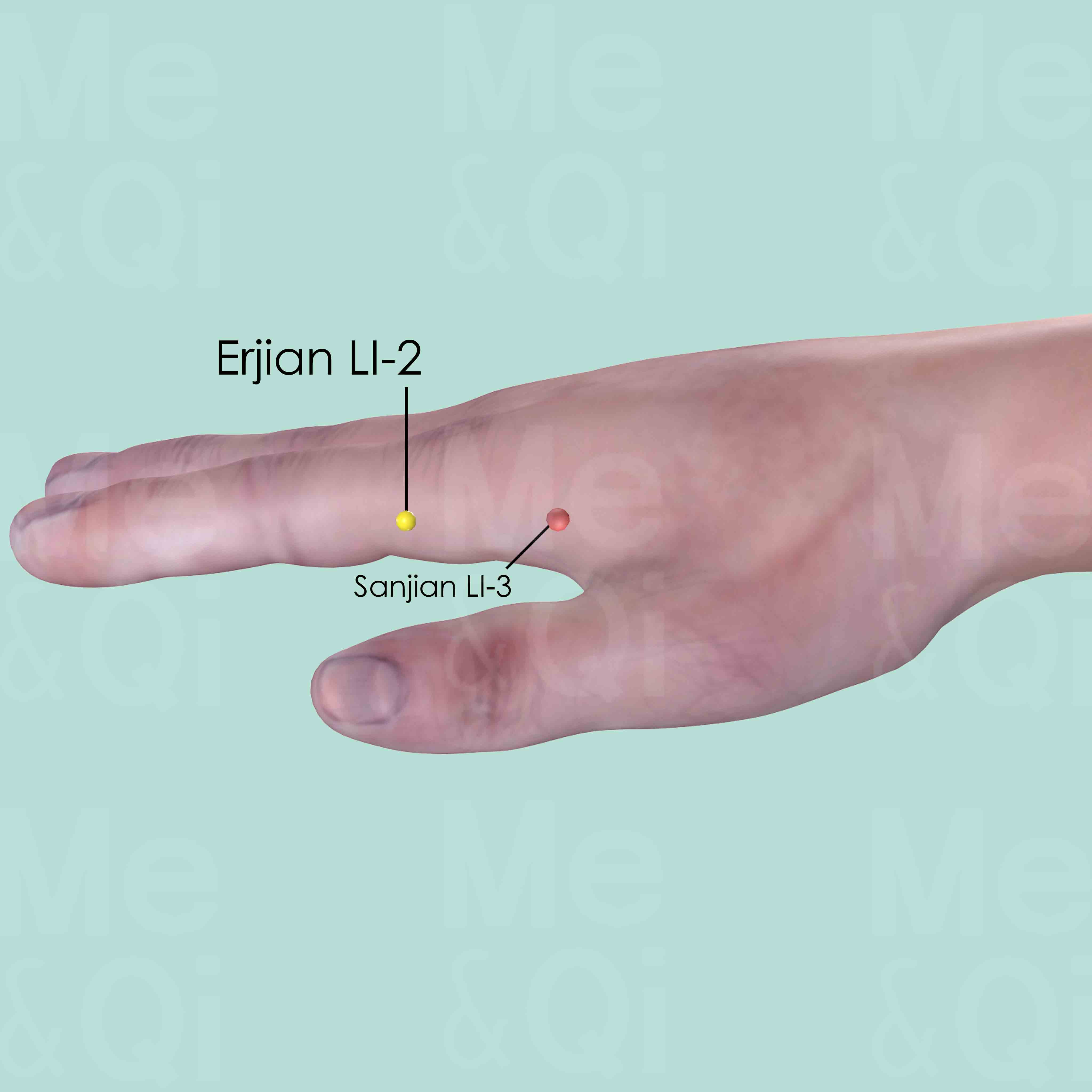
Erjian LI-2
On the radial side of the index finger, distal to the metacarpophalangeal joint, at the junction of the white and red skin.
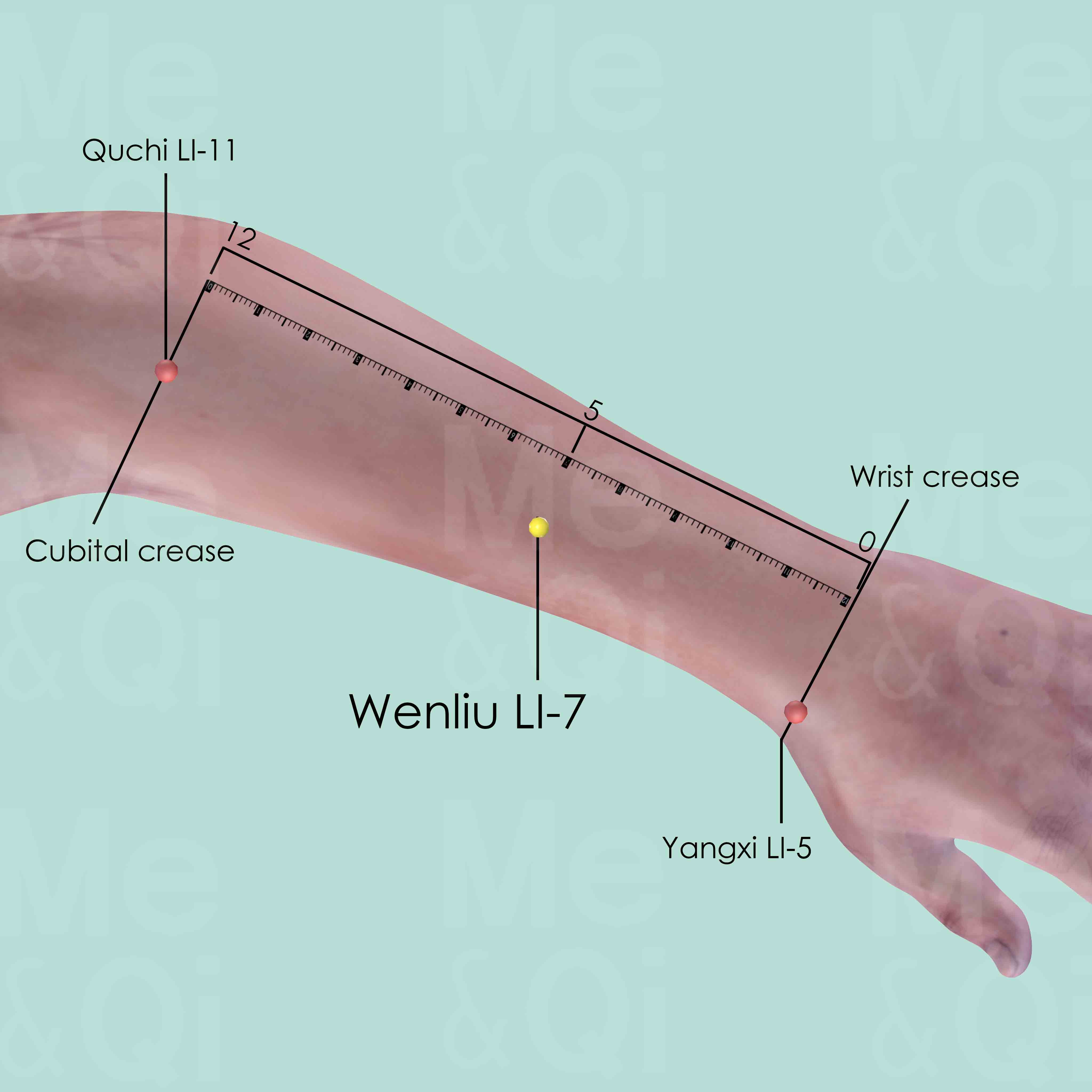
Wenliu LI-7
When a fist is made, with the ulnar side downward and elbow flexed, the point is 5 cun above Yangxi LI-5 at the wrist crease, 1 cun distal to the midpoint of the line joining Yangxi LI-5 and Quchi LI-11.
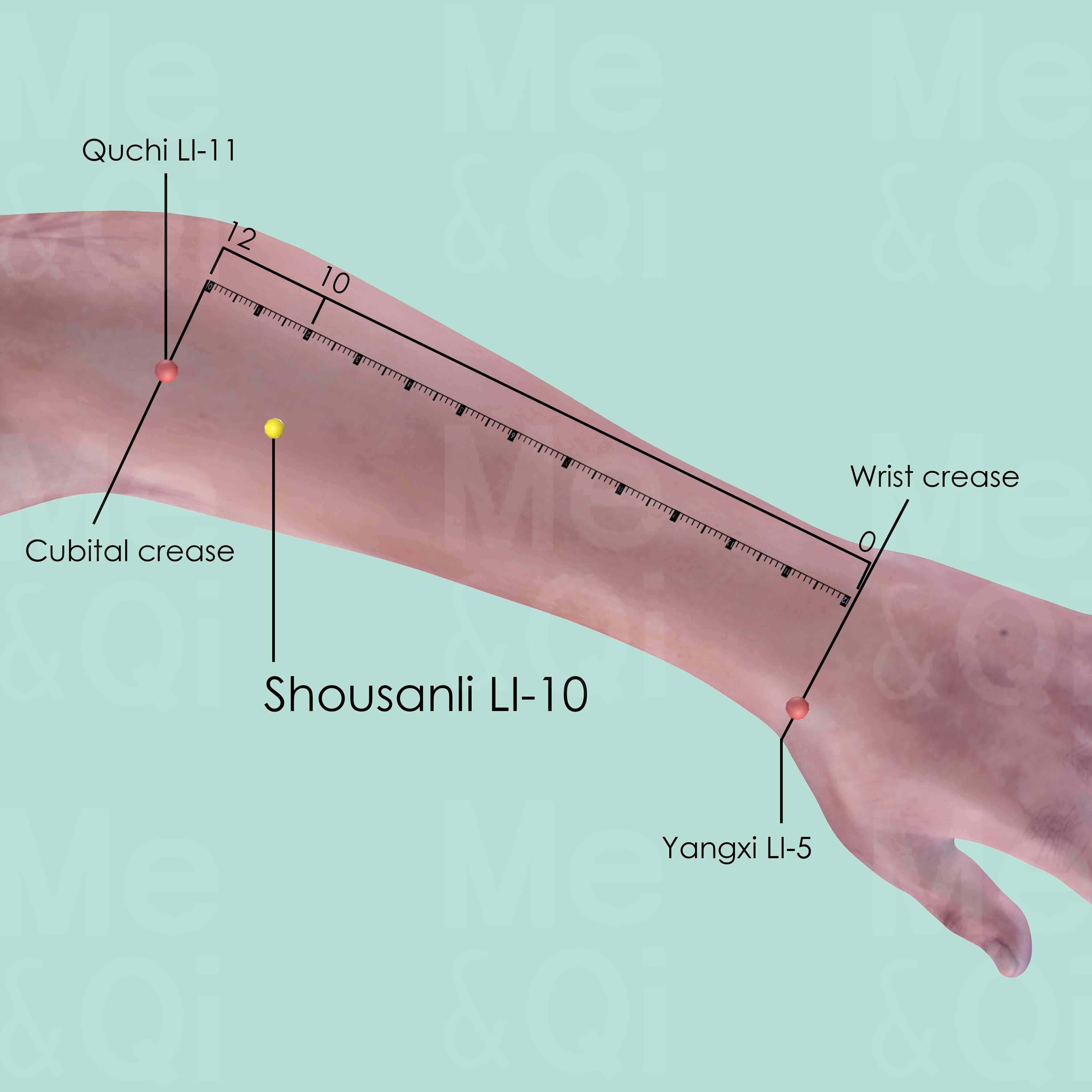
Shousanli LI-10
When a fist is made, with the ulnar side downward and elbow flexed, the point is 2 cun distal to Quchi LI-11 of the line joining Yangxi LI-5 and Quchi LI-11.
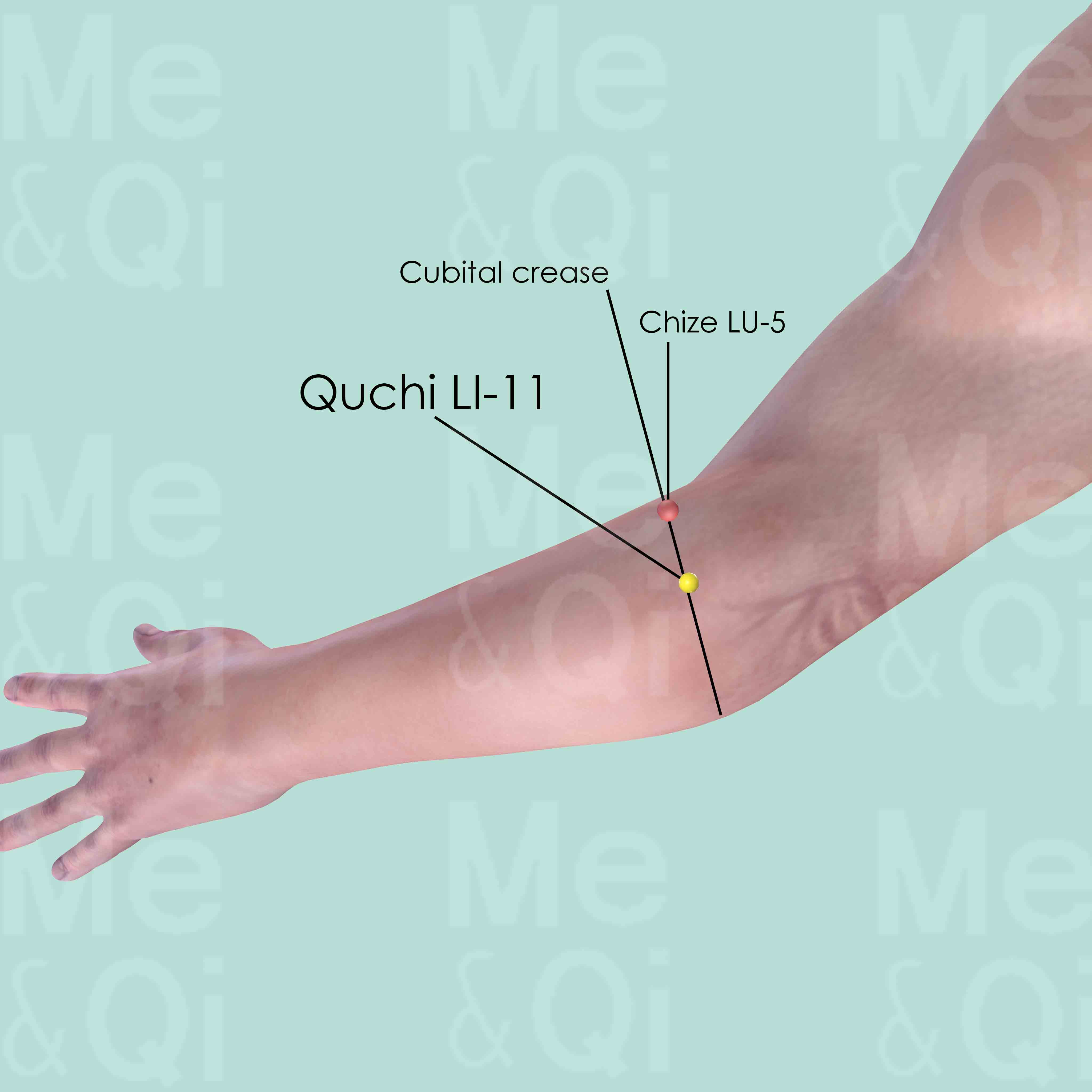
Quchi LI-11
When the elbow is flexed, Quchi LI-11 is in the depression at the lateral end of the cubital crease, midway between Chize LU-5 and the lateral epicondyle of the humerus.
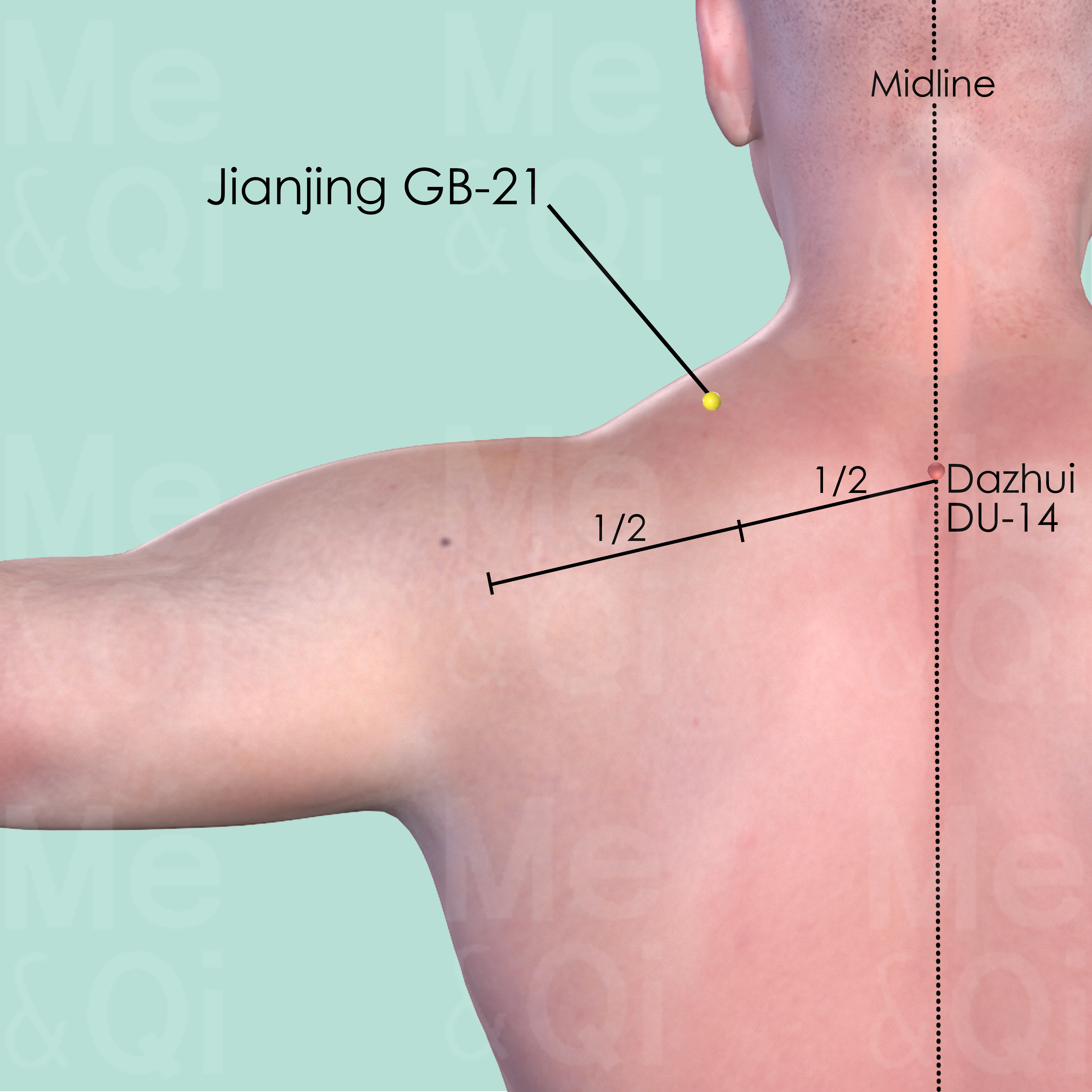
Jianjing GB-21
Midway between Dazhui DU-14 and the lateral extremity of the acromion, at the highest point of the shoulder.
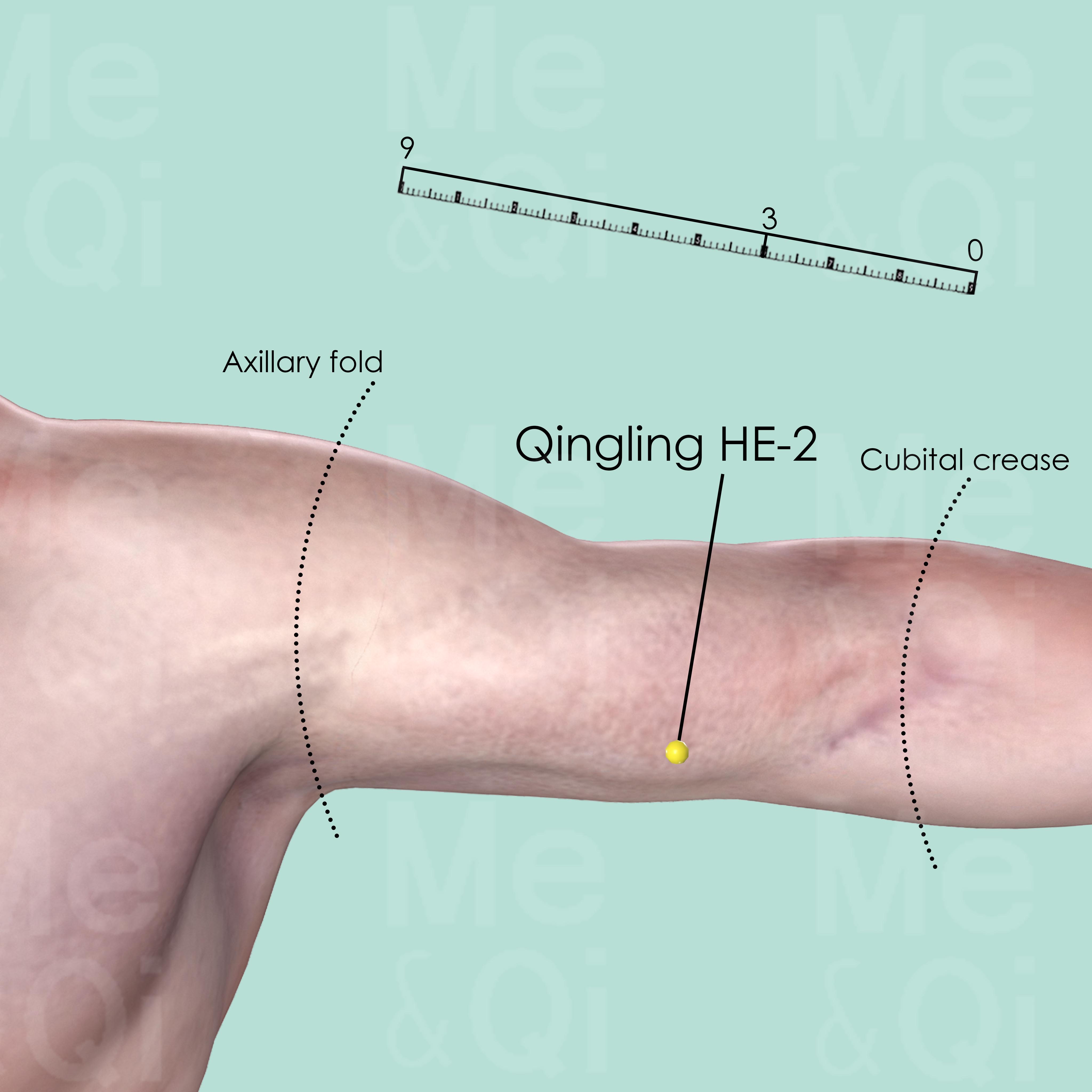
Qingling HE-2
3 cun above the medial end of the transverse cubital crease, in the depression medial to the biceps brachii muscle.
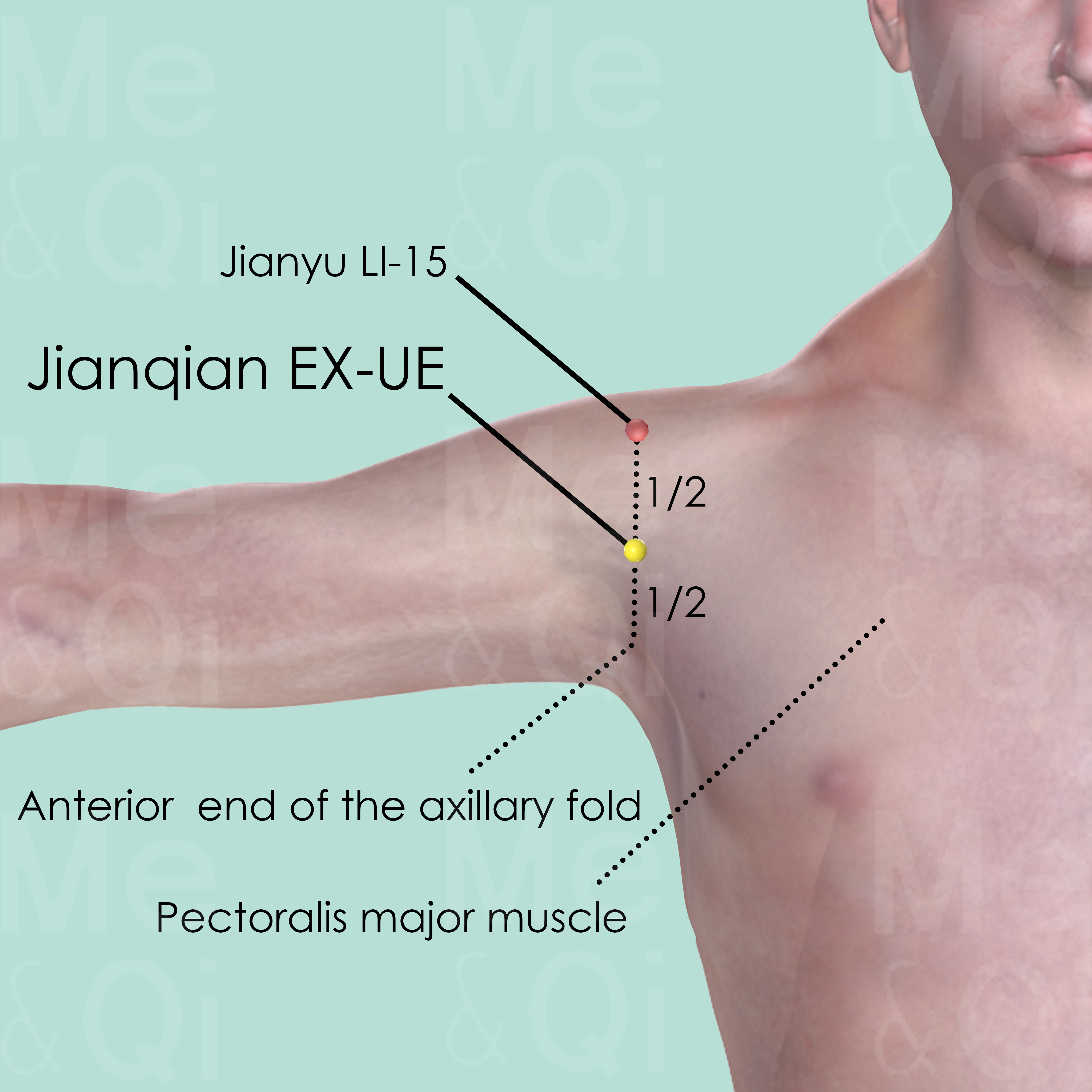
Jianqian EX-UE
On the midpoint of a line connecting the end of anterior axillary fold and Jianyu LI-15.
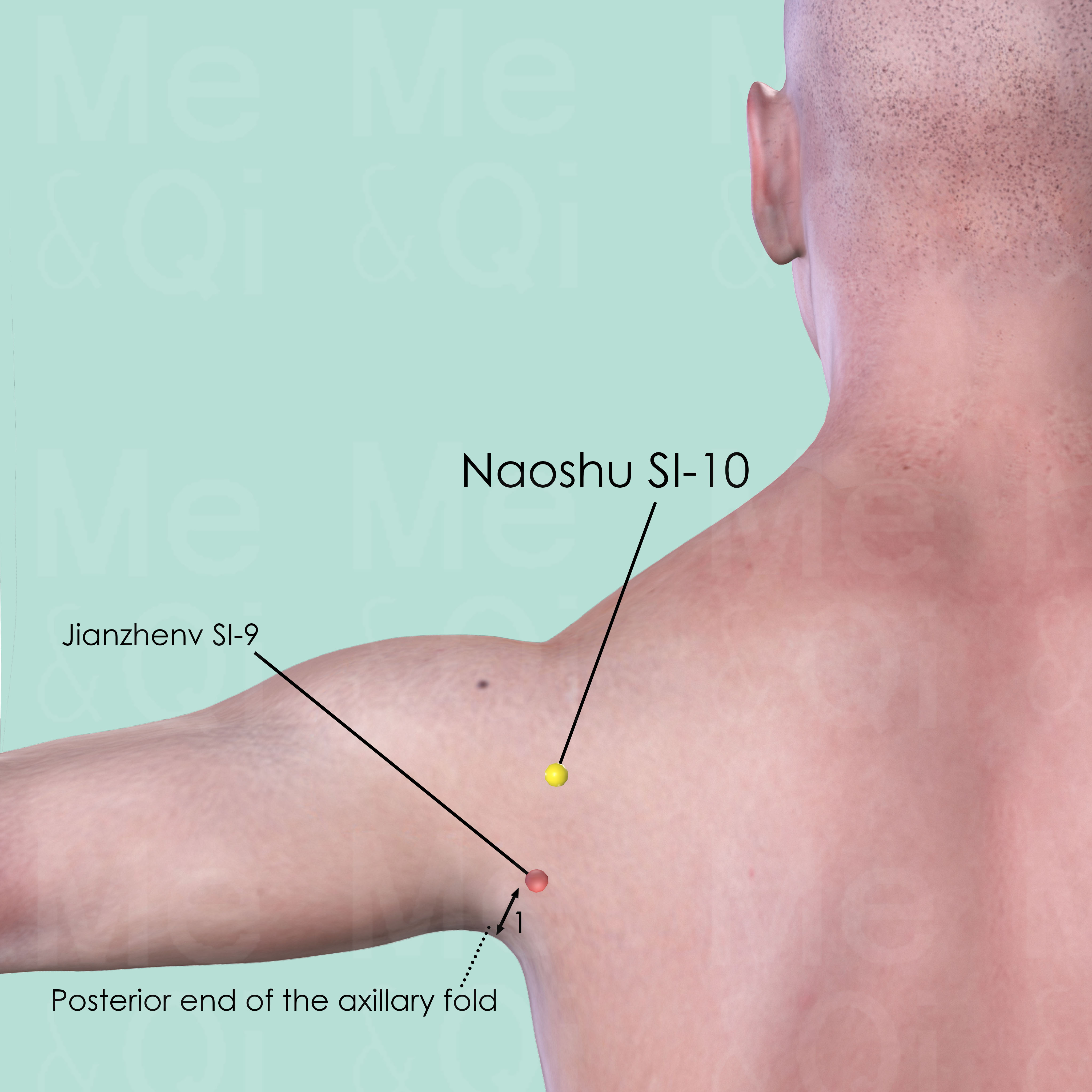
Naoshu SI-10
When the arm is adducted, Naoshu SI-10 is directly above JianZhen SI-9, in the depression inferior and lateral to the scapular spine.
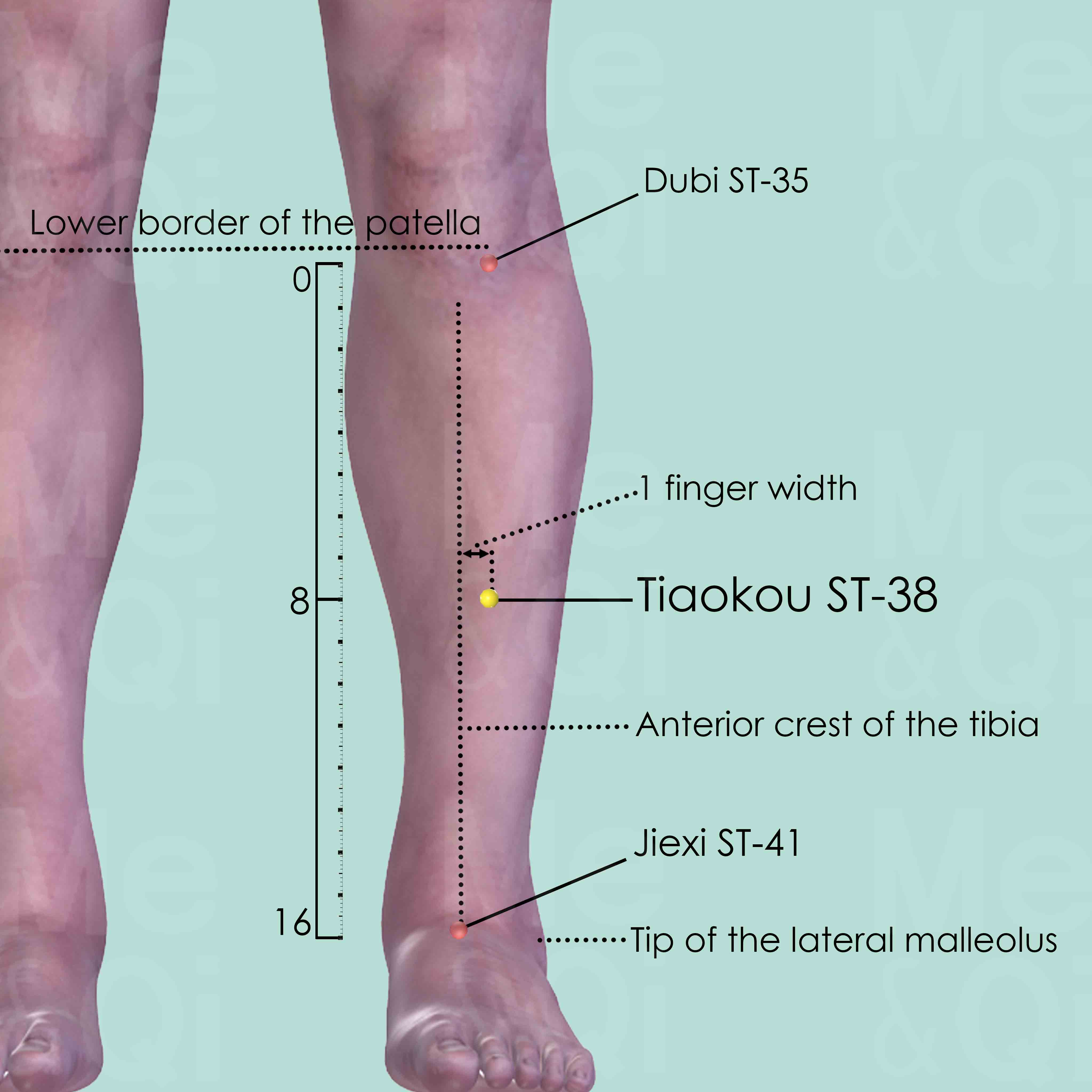
Tiaokou ST-38
8 cun below Dubi ST-35, midway between Dubi ST-35 and Jiexi ST-41, one middle finger-width from the anterior crest of the tibia.

